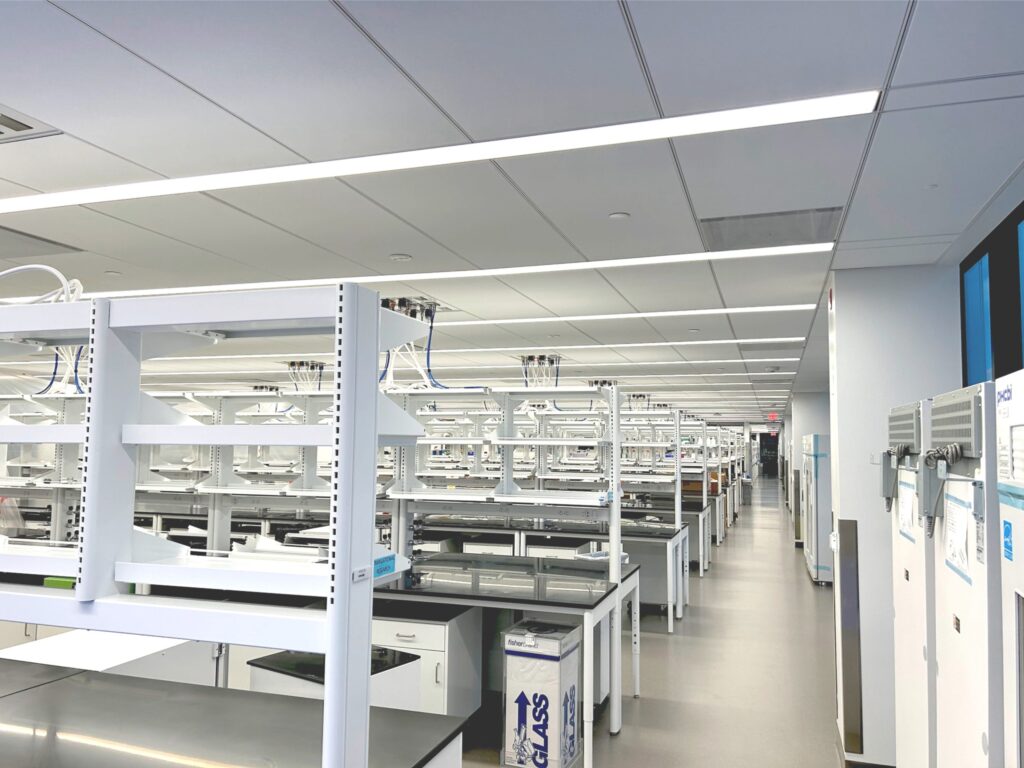Prefabrication Drives Precision and Speed in Life Sciences Facility Construction

Construction projects in the life sciences sector demand a meticulous blend of precision, speed, and safety to meet strict compliance standards and demanding construction timelines. Research labs, cleanrooms, and pharmaceutical manufacturing facilities rely on specialized electrical systems that must be installed without error. As the use of UL-certified prefabrication increases, how these facilities are built is fundamentally shifting. The use of prefab advances labor from the jobsite to a controlled manufacturing environment, directly addressing the core challenges of this growing sector by delivering guaranteed installation accuracy and accelerated schedules.
Efficiency via Prefabrication
The driving force behind a streamlined construction schedule in life sciences is the prefab center, where coordinated data is converted into high-quality, pre-assembled components. Prefabrication allows production to be done in a controlled environment, running in conjunction with onsite construction. This parallel process reduces the overall project duration by enabling the pre-building of assemblies that are essential to life sciences projects.
One of the biggest time savers in life sciences is the prefabrication of Ceiling Utility Panels (CUPs). CUPs are built complete with predetermined devices, circuitry, and labeling, and pre-wired for easy field hookup. Where a crew might spend six to eight hours building a CUP from raw bulk materials while standing on a ladder, prefab units can be installed in as little as 20 minutes.
Similarly, teams prefab surface mounted raceways to exact predetermined lengths. A 20-foot raceway run, which could take an installer three to four days to build and wire on site, is reduced to an installation time of only a half-hour to an hour when prefabricated. Additionally, prefabricated lighting control systems, including those for vivarium that require specific bus networks to simulate day/night cycles and integrate specialized red light options for after-hours operation, reduce challenging ladder work in the field.
Accelerating Schedules and Elevating Safety on the Jobsite
The benefits of offsite prefabrication extend directly to the jobsite’s environment, increasing both safety and cleanliness. By prefabricating and staging materials in a controlled setting, this approach eliminates the need for storing raw bulk materials on site, which reduces congestion, trash, and safety hazards, creating a cleaner, safer jobsite essential for pharmaceutical and research facilities. A sophisticated waste management process also increases efficiency.
By using prefabrication and optimizing precise logistical processes, electrical contractors are not just meeting tight schedules; they are setting new standards for efficiency and safety in the delivery of next-generation life sciences facilities.
By Edward Gould, operations center production area manager at Interstate Electrical Services Corporation.


